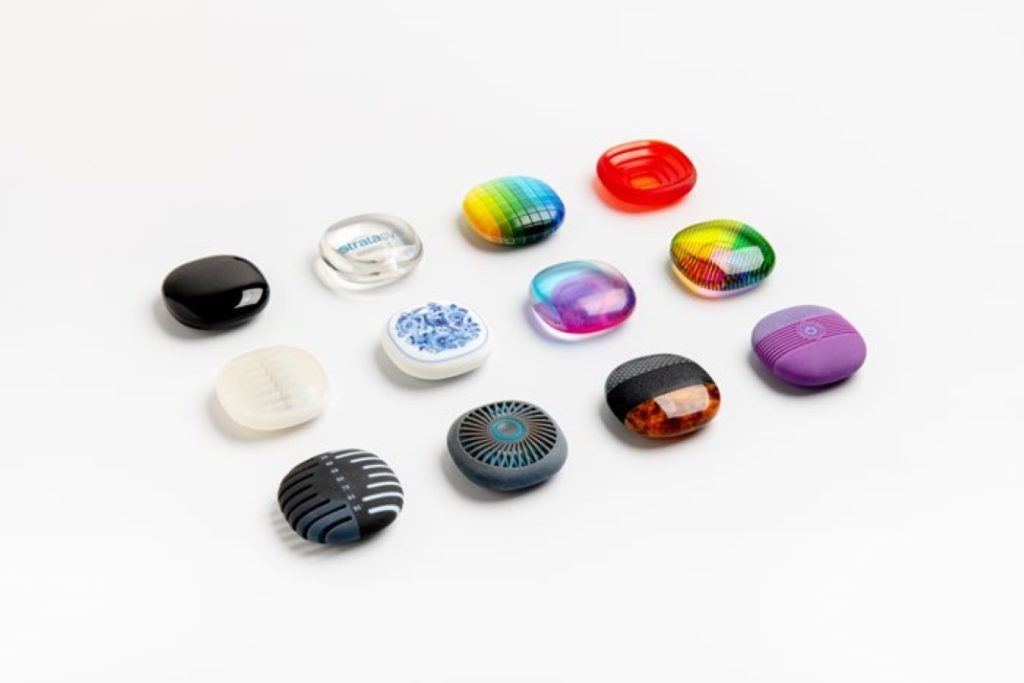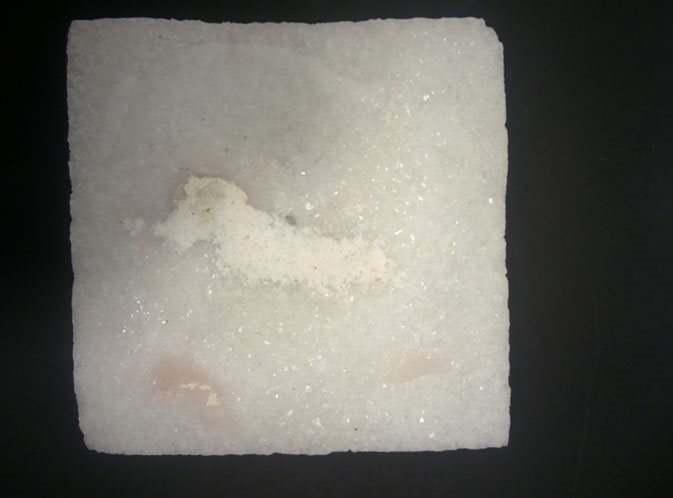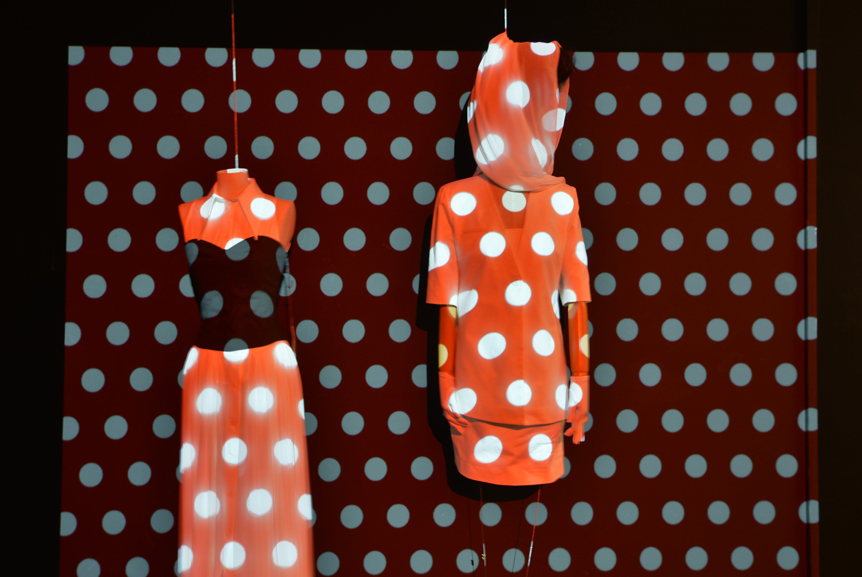Tokyo Fiber ’07 was welcomed with international acclaim in Tokyo in April 2007, then in Paris in June 2007. Tokyo Fiber ’09, at the Triennale in Milan, Italy in April 2009, was the second Tokyo Fiber installment, and retains the “senseware” theme from 2007.
Used for clothing, and intimately interlinked with people’s senses, Japanese fibers are evolving in leaps and bounds. They have developed extremely sophisticated properties, including capabilities such as thinness, light-weight, stretchiness, and three-dimensionality. A deeper examination into the world of fibers reveals a plethora of normally-hidden potential, including high performance characteristics and special functionality. For Tokyo Fiber , creators working in areas from fashion and product design to auto design and architecture had collaborated to produce 3D works that explore this unlimited potential of Japan’s fibers. Below, I look in detail at the advanced technology of Japanese fibers, and at the appealing, radical ideas created and presented through Tokyo Fiber .
Fibers as membranes
In the form of beautiful clothing, fibers wrap our bodies to keep them in comfort, just as skin protects a body. They are also effective membranes for covering all sorts of things. Fibers can provide a thin, flexible, and stretchable second skin, or they can act as supple armor equipped with high performance defenses against external threats. Both of these scenarios share the characteristic of fibers being able to produce a flexible material. To that basic characteristic can be added different membrane functions that have been developed to meet specific purposes.
Air membrane – Super-Organza
Super-Organza was presented at Tokyo Fiber ’07, where it was used in a creation that almost seemed to melt into the air of the venue. It is an ultra-thin, near-transparent material with a wet-looking glossy appearance. Using ultra-fine polyester monofilaments of only 7 denier-approximately one fifth of the thickness of fibers generally used in stockings-it is the world’s finest fiber, equivalent to the threads spun by spiders. A square meter of the material weighs only 11 g, making it the world’s thinnest and lightest material. Draped over a floating helium-filled doll like a cape, this mysterious material caught the imagination of many designers, and has since appeared in top brand collections and stores.
Surprisingly, this attractive material was originally developed for use inside domestic appliances, meeting requirements for an inner shield material to provide electromagnetic shielding inside plasma TVs. The base fabric for metal plating needed to be as thin and as transparent as possible. Unexpectedly, the material developed to meet these requirements turned out to be extremely beautiful, appealing to many fashion designers in Europe and elsewhere.
The starting point for the development of Super-Organza stimulated the creativity of the product designers who collaborated in Tokyo Fiber ’07. Wondering if applying electromagnetic shielding to Super-Organza would produce a soft material capable of shutting out mobile phone radio signals led to the idea of using the material as beautiful, thin, roll-up partitions to create a personal space that was both comfortable and open, while softly shutting out the outside world. Using plating techniques to apply electromagnetic shielding made the wonderfully thin material unacceptably stiff, so instead, the team responsible for coordinating materials attempted to use sputtering to metallize the Super-Organza surface. Sputtering is a relatively new technology for depositing nano-size metal particles of a titanium or similar composite onto the surface of the base fabric in a vacuum. The result of this experiment was a beautiful material that gained a metal-colored surface while still retaining its delicacy. We called this Super-Organza plus alpha. Tests revealed that the material does not provide sufficient electromagnetic shielding, but we are convinced that we are close to success, so we will continue to investigate what can be achieved with a little additional processing or innovation.
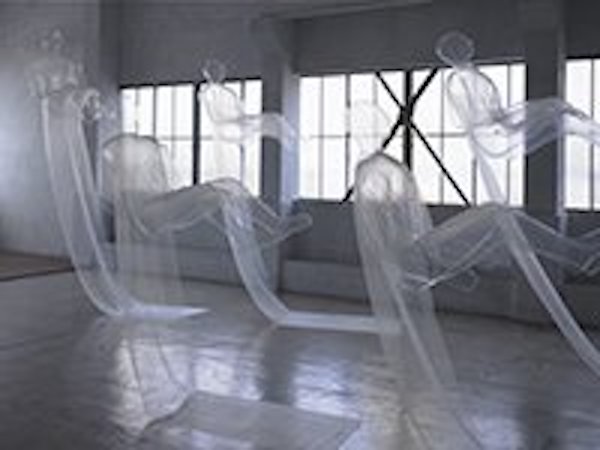
Aerial Fiber
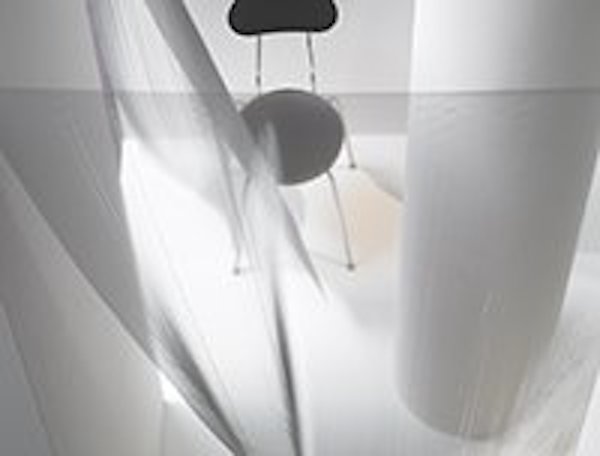
Shield Cafe
Cell-like ultra-membranes – Nanofiber
From initial attempts to simulate natural fibers, Japanese artificial fibers evolved rapidly as developers worked to produce fibers as close to silk as they could. The keys to their success lay in innovation in cross-sectional structures and in making finer fibers, of which the extreme example was the development of “microfibers”. By this point, artificial fibers had transcended the realm of imitation of natural fibers. The fibers being produced were completely new, with their own unique feel and appearance, and they also had new functions. One familiar example can be seen in the fabric used for wiping glasses, which benefits from a new ability to pick up dust.
Microfibers are very fine, equivalent to about 1/100 of the thickness of a human hair, but developers have now gone a step further and produced “nanofiber.” These are ultra-fine fibers, attaining sizes of around 1/7500 the thickness of hair. Textiles (membranes) constructed of these fibers can have structures close to those found in cells and cell tissue. Nanofibers made their initial debut in the world of fashion as materials with a novel, attractive surface that had a porcelain-like density, smooth texture and a beautiful luster. Some can also be given ultra water-repellent properties with a sort of coating produced by calender finish (a hot press process similar to ironing). It had previously been necessary to apply resin in conjunction with calendering to produce a water-repellent fabric, but with nanofibers, only heat is required. Because nanofibers are so fine, the fibers at the part of the surface melted by the heat become welded together, producing a membrane or film that repels water. It is as if you are transforming some of your own cells into a membrane. Water-resistant coatings formed with a resin soon lose their effectiveness when the fabric is laundered, but water-repellent fabrics produced using nanofibers are more durable.
Super-Organza is a monofilament fiber, using only a single filament, but nanofibers, like microfibers, are used as multifilament yarns, with a number of filaments bundled together like a cable. As a result, the yarns have a complex internal structure like a cellular structure. This gives a very high surface area ratio, and because of the uneven surface, these fibers have properties such as the ability to absorb water and pick up matter at the nano-level. For Tokyo Fiber ’09, a small but hard-working wiping cleaner uses such a fabric for wiping floors. Nanofibers have only recently been launched as commercial products, and there is much that is still unknown about their performance, but they are already drawing interest for their potential as filters using capillary action, for their kind-to-the-skin characteristic resulting from a cell-like nature that fits well with the human body, and for the effective barrier that a fabric can provide despite being so thin. As further processes and applications are developed by focusing on required characteristics, this new material is expected to play an increasing role in all areas of our everyday life.
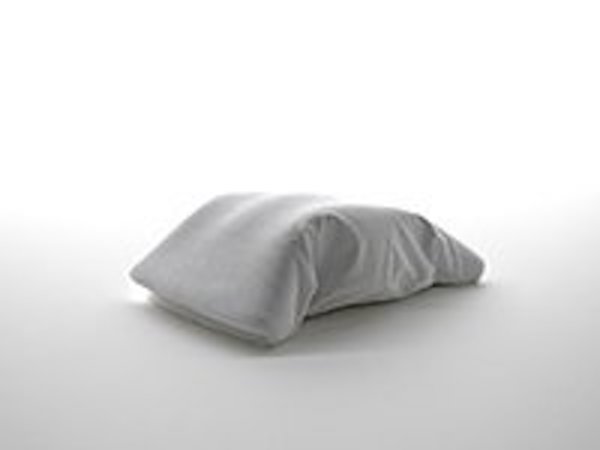
Wiping Cleaner “Fukitorimushi”
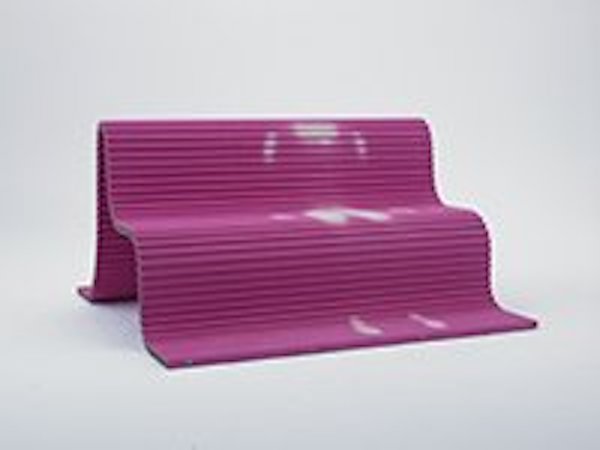
Temperature Sensitive Furniture
Fibers capable of sensing
One of the ideas presented at Tokyo Fiber ’07 was a bench using thermal color change fiber. The fiber detects body heat and air temperatures, and changes color in accordance with the temperature. When someone who has been sitting on the bench stands up, a silhouette remains where the bench had been warmed. Imagine wearing clothes with a similar function. If the frisson you feel on meeting someone exciting changed the color of your clothes instead of just making your cheeks redder, that could be a means of conveying signs. That particular idea may be no more than a fantasy, but we have already reached the stage where high-tech fibers do more than just provide a membrane to wrap around. At Tokyo Fiber ’09 we present fibers that can transform like living creatures in response to people or things, or to environments and conditions.
Fibers that can be tuned – Tunable fibers
In the area of artificial fiber materials for sportswear and innerwear, new materials are being developed that can sense the human body environment and adjust to maintain comfort. Most of such fibers achieve this function through special processing after the basic manufacturing stage, but there is also a high-performance material where the adjustment functionality is already present in the raw material for the fiber. This is a special EVOH fiber with biocompatibility enabling it to fit in with and be kind to the skin. It has a number of useful characteristics, including air-permeability, water absorbability, acoustic absorbability, and stretchability, and it tunes itself to make the wearer comfortable. It is already used in commercial products in the medical field, such as filament nonwoven gauze and bandages, and also in underwear to combat allergies and atopic dermatitis. Tokyo Fiber ’09 includes an exhibit where this fiber has been used to make a cocoon-like cradle for a new-born baby. Nonwoven fabric made from this biocompatible fiber can be formed in three dimensions using heat and steam, so the bowl-shaped section that holds the baby is placed is formed so that it sets into a shape appropriate for the baby’s body. The fabric around the cradle that provides a link between the baby and its mother retains its original softness, thereby achieving a combination of softness and hardness with a single material.
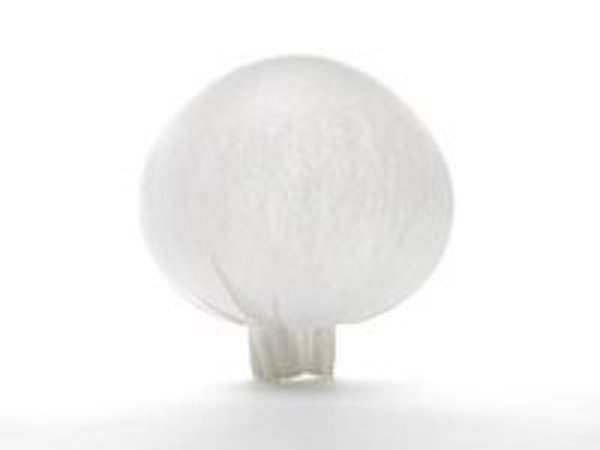
Blown Fabric
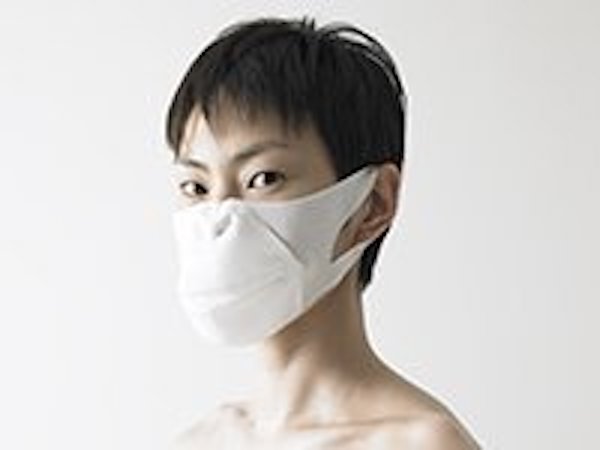
To Be Someone
Fibers that can be molded in 3 dimensions – Moldable fibers
Another nonwoven fabric uses polyester filament fibers to create a robust material that is light and does not tear easily. It is highly thermoplastic and can be easily shaped by applying heat, which enables it to be used for 3D forming of products with substantial depth. It has good permeability for air and liquids, and provides a smooth surface that is easy to print on. For Tokyo Fiber ’09, two creators used this material. One has created pollen masks realistically shaped like a classically beautiful female face, and the other has created lamps like traditional paper lanterns, but with the fabric formed by blowing it up like a balloon. Both of these exhibits demonstrate the manufacture of three-dimensional forms from flat material without sewing, providing a hint to future textile materials.
Fibers that communicate
Some of the very latest high-performance fibers are used in a wide range of high-tech fields to provide data transmission for digital communications and computer control, or sensor and switching functions in domestic appliances. These functions are becoming increasingly pervasive, simplifying our daily lives. At Tokyo Fiber ’09, such possibilities are examined further, exploring the potential for fibers to interact with people.
Fibers capable of expression – Optical fibers
Optical fibers made from plastic fibers have several differences from conventional optical fibers made from silica, the material used for glassmaking. They are flexible, easy to handle, and enable the use of large diameter sizes. This makes them easier to work, and enables significant improvements in transmission speeds, leading to a dramatic increase in usage for digital communications and telecommunications applications. As their name suggests, optical fibers are very attractive fibers that transmit light and can produce a beautiful shine. One of the Tokyo Fiber ’09 exhibits is a luminous bench, consisting of a bench covered by a fabric knitted from optical fibers. The result is a bench that acts as a lighting feature, providing soft, enchanting illumination.
Another exhibit using optical fibers has the fibers embedded into concrete, creating concrete blocks that light can pass through. Both of these 3D works are forms of lighting that use light as a vocabulary to interact with people. They are both artistic objects, presenting another facet of optical fibers: the ability to express emotional values through the distinctive character of light to sway human emotions.
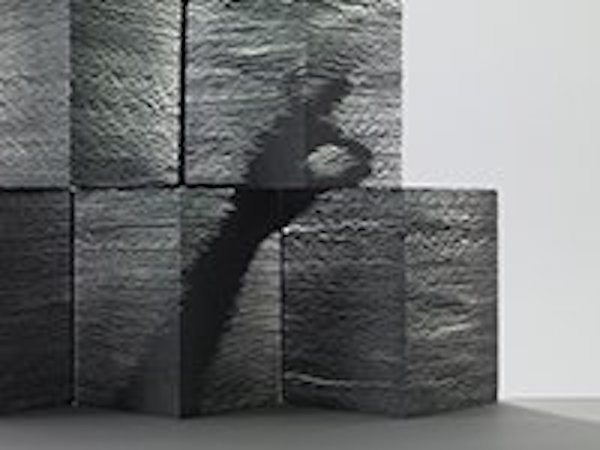
Con/Fiber
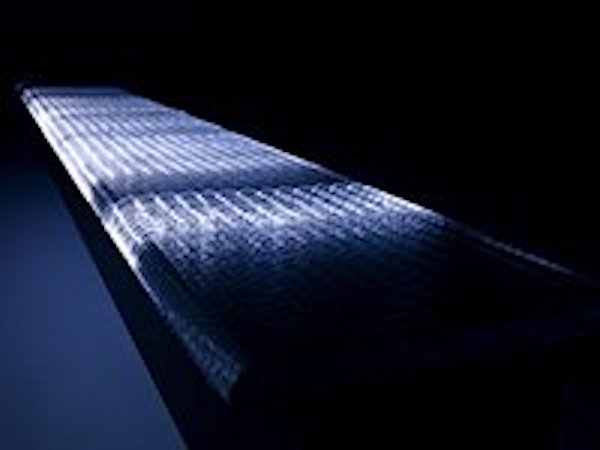
Mist Bench
Fibers capable of conveying information – Electro-conductive fibers
High-tech fibers can be used to take the place of metal in transmitting electricity. A material made from a PVA composite fiber embedded with nano-size metal particles can retain the fiber’s distinctive pliability while the metal particles scattered over the surface of the fibers conduct electricity, not linearly, but over a wide area. Flat fabric made from such electro-conductive fibers can be used to make computer keyboards in the form of thin sheets that can be rolled up.
At Tokyo Fiber’09, the touch-sensor function of these electro-conductive fibers is used in a proposal for active flooring given the name “Robot Tile.” The tile-like floor elements detect walking motions and move into the direction of walking to intercept the walker’s feet as they land. This experimental exhibit demonstrates a mechanism for interaction with human movement that is sure to evolve in the near future into a variety of appliances and equipment that can provide support for human activities.
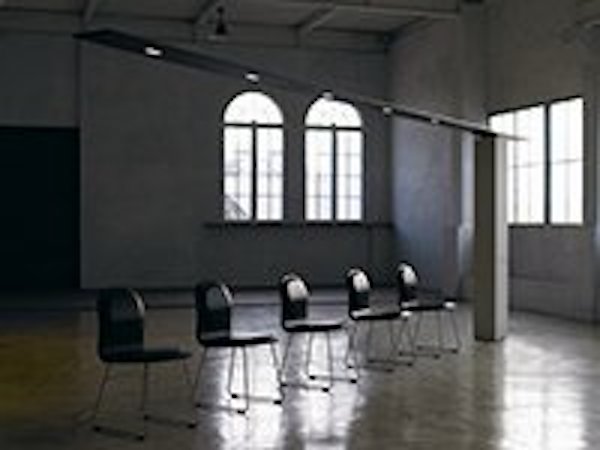
Thin Beam
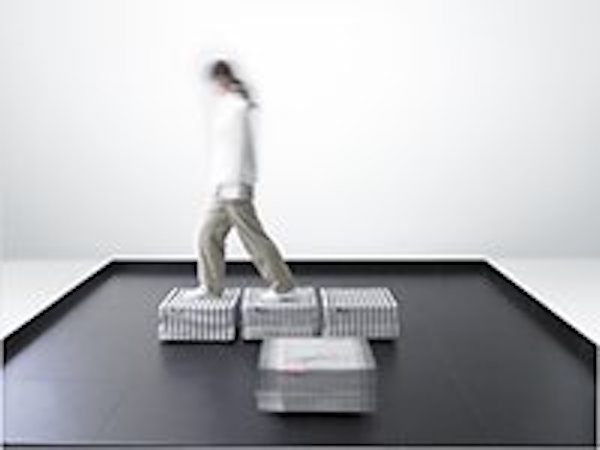
Robot Tile
Future super-fibers
The 20th century was a time of dramatic advances in technology, with new materials emerging in fields such as metals and plastics, which tend to be perceived as being far from the field of fibers. However, these new materials became the raw materials for fibers, or were hybrid materials developed with a significant contribution from the sophisticated technology nurtured through developing composites or processes for artificial fibers. These developments have influenced the world of fibers, leading to new-generation fibers that not only combine different materials, but combine technologies or integrate senses of value from different fields.
Super fibers – Carbon fiber
The best-known new fiber of the 20th century was carbon fiber. These fibers, formed by carbonization of acrylic or similar resin fibers, are tough, strong, elastic, and have many other useful properties including resistance to heat and chemicals. Their high performance in so many aspects has gained them the reputation as super fibers. Lighter and stronger than steel, they have been used for airplane construction, and for auto components, too. Imagine these super fibers as Superman, flying through the sky or dashing around the earth’s surface. Their status as a frontier material is also shown by their use in spacecraft. Closer to home, they are also vital for golf clubs, fishing rods and racquets for tennis and similar sports.
For Tokyo Fiber ’09, these characteristics of carbon fibers and the material’s distinctive, beautiful color were used to make a very slim, light-weight, stylish chair, and a lighting unit that illuminates a large area using a long arm that stretches out overhead for a full 6 meters. Wider application of carbon fiber is still hampered by its cost, but it has the benefit of being recyclable, and is expected to play an increasing role in architecture and industrial applications.
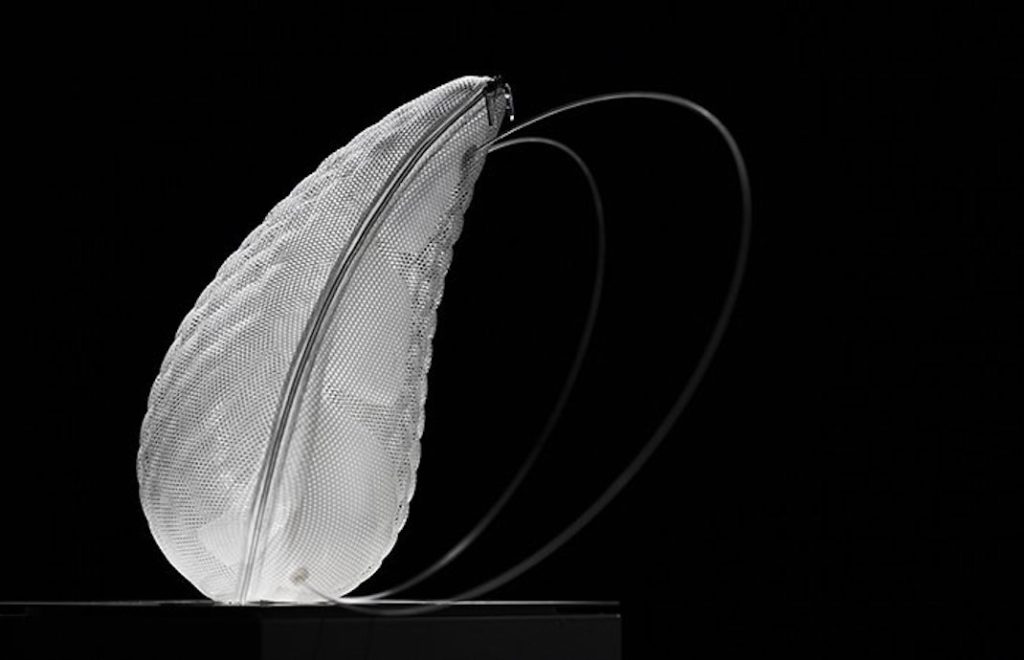
Seed of Love
Super-woven – Triaxial woven fabric
The performance of a fabric depends on the properties of the fibers used, but it is also highly dependent on the weaving, knitting, or other technology used to combine the fibers into a sheet. Carbon fiber is used in spacecraft applications such as extensible antennas for its strength and lightness, but when an even lighter and more compact material is required, triaxial woven fabric is selected. Fabric of this type can produce strong but flexible 2D and 3D shapes with a relatively small amount of fiber. Conventional woven fabric uses two strands, a warp and a weft, intersecting at 90 degrees, and linked together in different ways according to the weave required. In contrast, triaxial woven fabric uses three strands, having a single weft that intersects diagonally at 60 degrees with each of two warp strands. The triaxial weave resembles the pattern of some basket weaves, and is flexible and robust because tensile loads are dispersed throughout the material. Similar structures are found in the natural world in tissues like the retina in the eye, so although this is a new material, it is constructed using a well-tried and logical structure.
For Tokyo Fiber ’09, triaxial woven fabric has been used to create a lightweight backpack with an organic form. As the application is a bag, the triaxial woven fabric provides suffcient strength, so polyester is used instead of a super-fiber. However, these are special polyester fibers with thermoplastic properties. After weaving the triaxial fabric as a flat material, it is heated and molded to create the three-dimensional form.
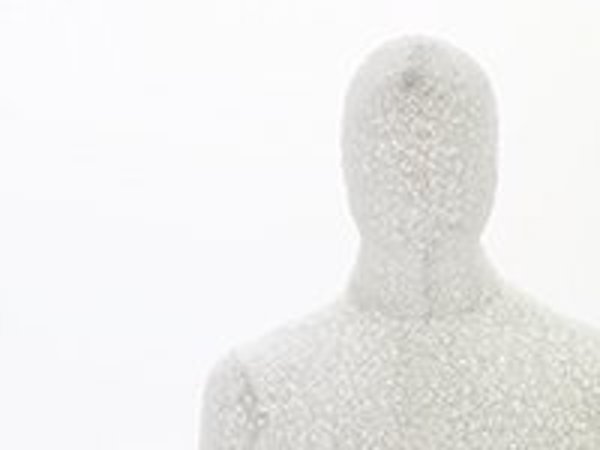
Fiber Bein
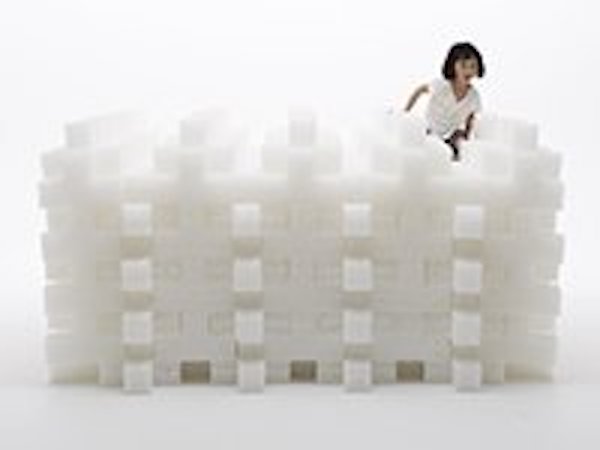
Toys Comprising Visible Air
Super-structured – 3D materials
One 3D material is manufactured by a fiber forming/spinning process instead of by weaving or knitting. Filaments are made by extruding the polymer through a number of nozzles, much like a garlic press. If the filaments are allowed to tangle in random coils, it is possible to create a structure like a block of instant noodles, made springy by the use of polymer. The 3D spring structure can be produced as thick sheets. This material is used in applications such as seat cushion inners for the latest Shinkansen trains. It has a springy elasticity similar to conventional polyurethane cushions, but because it is based on a polyester elastomer with greater durability than urethane, it is longer-lasting. The structure provides air-permeability, and the material can be washed to maintain hygiene. Furthermore, because it is thermoplastic, it can be molded into 3D forms. For Tokyo Fiber ’09, two exhibits use this material: washable play equipment that takes advantage of the springiness, and a human mannequin frame that transforms in unexpected ways.
Super-eco – biodegradable/3D materials
A 3D material can also be constructed by knitting. Such a material was produced for Tokyo Fiber ’09, using double Raschel knitting to knit a 3D sheet with a thickness of 3 cm. This type of sheet is typically used in applications such as earth stabilization in conjunction with riverbank construction work. Here, however, it was used as a planter, allowing moss to take root, and turning the exhibition venue into a Japanese moss garden.
The 3D sheet is knitted from polylactic acid (PLA), a plant-derived fiber that is biodegradable, so it will eventually return to nature. Eco-philosophy started from a position of taking care of nature and being gentle on the environment, but the philosophy has changed to taking a more active approach and becoming one with nature. In tune with that new philosophy, this is an eco-fiber of the future.
As fibers to cover our bodies developed into fabrics to keep us safer and more comfortable, they became the materials for fashion, enabling us to decorate our bodies aesthetically, enriching our daily lives and making us feel happier. Later, as fiber technology progressed, a large number of new materials emerged. With a wide variety of characteristics and functions, these new materials transcended the limits of fashion, and are now finding applications as soft materials with specific functions in a broad range of fields from product design to architecture and from industry to medicine. The experimental products presented at Tokyo Fiber consider more than just function. They are also designed to convey each fiber’s distinctiveness and appeal, The objective is to motivate designers and engineers to develop products utilizing the fibers.
The key to turning these into practical products, securing and growing a market is to take an approach that is focused on how the 2D materials created from the fibers can be constructed into 3D products. We need to develop fibers and materials that can be formed, using forming technology to replace the sewing technology that is essential for sewn products. At
Tokyo Fiber ’07, attention focused on super-knit products that could be cut without needing to hem the edges against fraying, such as the seamless knit that was like a skin for the Little TV that Rests in Your Hand, and jersey that could be heat-welded. At Tokyo Fiber ’09, many of the exhibits are applications of molding techniques such as those using heat in a similar way to the methods for molding hard materials such as plastics and metals. That is attested to by the painful making process reflected on many times when fabricating molds and dies.
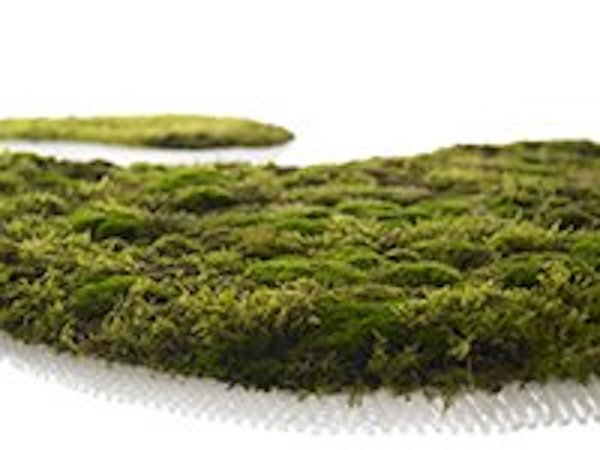
Time of Moss
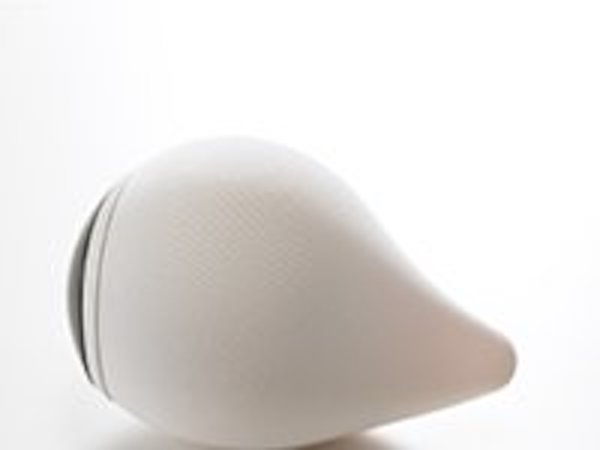
Little TV That Resets In Your Hand
| Fibers are rarely used without further processing. In most cases, they are used as threads (filaments) or as fabric (2D sheets of material), often with value added by a surface treatment of some sort. In order to ensure that powerful applications for fibers are pioneered and developed for fashion and for new areas, it is essential to do more than just develop a fiber in isolation. We need to think about how products progress from individual points to lines, and from 2D products to 3D products. |
The exhibition Senseware – Tokyo Fiber was displayed at the Design Museum Holon on the dates: June 24, 2010 – September 04, 2010
